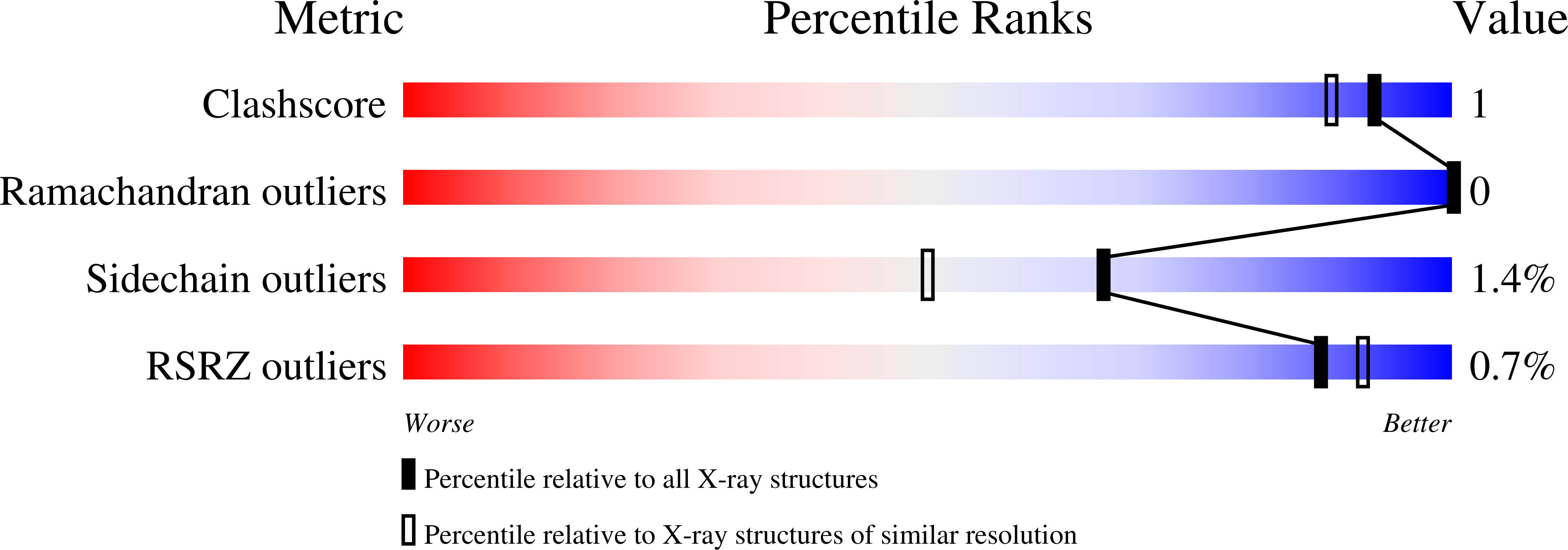Crystallographic evidence of a transglycosylation reaction: ternary complexes of a psychrophilic alpha-amylase.
Aghajari, N., Roth, M., Haser, R.(2002) Biochemistry 41: 4273-4280
- PubMed: 11914073
- DOI: https://doi.org/10.1021/bi0160516
- Primary Citation of Related Structures:
1G94, 1G9H, 1KXH - PubMed Abstract:
The psychrophilic Pseudoalteromonas haloplanctis alpha-amylase is shown to form ternary complexes with two alpha-amylase inhibitors present in the active site region, namely, a molecule of Tris and a trisaccharide inhibitor or heptasaccharide inhibitor, respectively. The crystal structures of these complexes have been determined by X-ray crystallography to 1.80 and 1.74 A resolution, respectively. In both cases, the prebound inhibitor Tris is expelled from the active site by the incoming oligosaccharide inhibitor substrate analogue, but stays linked to it, forming well-defined ternary complexes with the enzyme. These results illustrate competition in the crystalline state between two inhibitors, an oligosaccharide substrate analogue and a Tris molecule, bound at the same time in the active site region. Taken together, these structures show that the enzyme performs transglycosylation in the complex with the pseudotetrasaccharide acarbose (confirmed by a mutant structure), leading to a well-defined heptasaccharide, considered as a more potent inhibitor. Furthermore, the substrate-induced ordering of water molecules within a channel highlights a possible pathway used for hydrolysis of starch and related poly- and oligosaccharides.
Organizational Affiliation:
Institut de Biologie et Chimie des Protéines, UMR 5086 CNRS and Université Claude Bernard Lyon 1, Laboratoire de Bio-Cristallographie, 7 Passage du Vercors, 69367 Lyon Cedex 07, France.



















